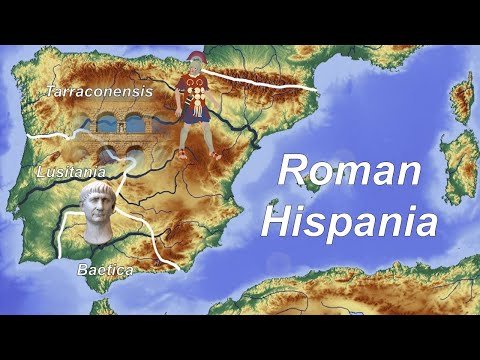🏰 Explore Roman Ruins in Spain 🏛️🌴

Spain is a country that boasts of a rich and diverse history. From the Moors to the Romans, the country has seen its share of rulers and conquests. One of the most fascinating periods in Spain's history is the Roman era. The Romans left behind a legacy in Spain that can still be experienced today, in the form of magnificent ruins and structures. Exploring these Roman ruins in Spain is a journey through time, an opportunity to walk in the footsteps of the ancient Romans who once ruled this land. In this article, we will take a closer look at some of the most impressive Roman ruins in Spain and what you can expect when you visit them.
Where can tourists see Roman ruins in Spain
Spain is a country steeped in history, and one of the most fascinating periods of its past is the Roman era. The Romans occupied Spain for over six centuries, leaving behind an impressive legacy that can still be seen today. For tourists interested in exploring Spain's Roman ruins, there are plenty of options to choose from.
Tarragona
Tarragona is a small city located in the northeast of Spain, and it is home to some of the most impressive Roman ruins in the country. The city was once the capital of the Roman province of Hispania Citerior, and as such, it boasts an impressive array of Roman architecture. Visitors can explore the ancient walls that once surrounded the city, the amphitheater, and the forum, among other sites.
Mérida
Mérida is another Spanish city with a rich Roman history. Located in the region of Extremadura, it was once the capital of the Roman province of Lusitania. Today, visitors can explore the remains of the Roman theater, the amphitheater, and the aqueduct, among other sites. The city also has a fantastic museum dedicated to Roman artifacts.
Segóbriga
Segóbriga is a lesser-known Roman ruin located in the region of Castilla-La Mancha. The site was once a thriving Roman city, and visitors can explore the remains of the amphitheater, the forum, and the impressive aqueduct. There is also a museum on site that displays some of the artifacts found during excavations.
Baelo Claudia
Baelo Claudia is an ancient Roman city located on the southern coast of Spain, near the town of Tarifa. The city was once a thriving port and is now one of the best-preserved Roman ruins in the country. Visitors can explore the remains of the forum, the theater, and the impressive basilica. The site also boasts a fantastic museum that houses some of the artifacts found during excavations.
Itálica
Itálica is an ancient Roman city located near Seville. The city was founded in 206 BC and was once one of the most important cities in the Roman province of Hispania Baetica. Today, visitors can explore the impressive amphitheater, the forum, and the remains of several Roman houses. The site also has a museum that displays some of the artifacts found during excavations.
Spain's Roman ruins are a testament to the country's rich history and are a must-visit for anyone interested in ancient civilizations. Whether you're interested in exploring the impressive amphitheaters or the intricate mosaics, there is something for everyone in Spain's Roman ruins.
What is the most important Roman site in Spain
Spain is a country that is steeped in history and culture. One of the most significant periods of its history is undoubtedly the Roman occupation. The Romans conquered Spain in the 3rd century BC and left behind a rich legacy of architecture, art, and culture. There are many Roman sites in Spain that are worth visiting, but which one stands out as the most important?
The answer to that question is undoubtedly the Aqueduct of Segovia. This impressive structure is a testament to the engineering skills of the Romans and is one of the most well-preserved aqueducts in the world. It was built in the 1st century AD to transport water from the Frio River to the city of Segovia, which was then known as Segovia Ipagro. The aqueduct is made up of more than 20,000 granite blocks and stands at a height of 28.5 meters.
The Aqueduct of Segovia is not just a remarkable feat of engineering; it is also an important symbol of the city's heritage. It is featured prominently on the city's coat of arms and is a well-known landmark that is recognized all over the world. The aqueduct has been recognized as a UNESCO World Heritage site since 1985 and is one of the most popular tourist attractions in Spain.
Visitors to the Aqueduct of Segovia can marvel at the impressive structure and learn about its history at the Interpretation Center, which is located in the Casa de la Moneda. The center features exhibits on the Roman occupation of Spain, the construction of the aqueduct, and the history of Segovia. Visitors can also walk along the top of the aqueduct, which offers stunning views of the city.
In conclusion, the Aqueduct of Segovia is the most important Roman site in Spain. Its impressive engineering, historical significance, and cultural importance make it a must-see for anyone visiting the country. If you're planning a trip to Spain, be sure to add Segovia to your itinerary and experience the wonder of this remarkable structure for yourself.
If you want to discover other articles similar to 🏰 Explore Roman Ruins in Spain 🏛️🌴 you can visit the category Spain.
Leave a Reply

¡More Global Tours!